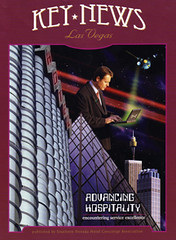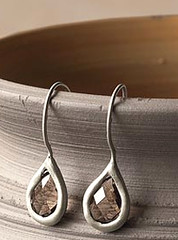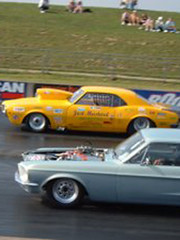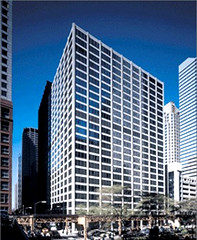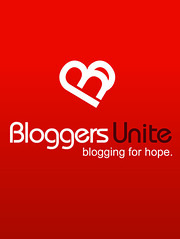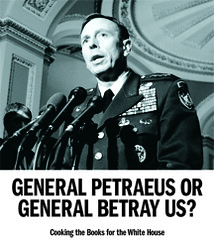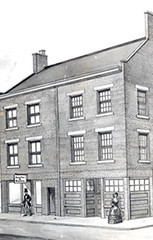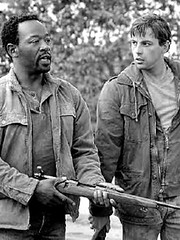It is no surprise to me that most social measures are misused. Many of the misconceptions mimic erroneous measures that are currently misapplied by the majority of public relations firms (not all of them) and ad sales teams.
By bridging traditional communication example with the current misapplication of measurement in social media, the error becomes even more apparent. We know a lot about that; we see it every day.
Buzz is the easy part.
In the late 1990s, my niche sub-consulting company did something out of the ordinary. We launched a split local/international trade publication for concierges and hospitality professionals.
At the time, the concierge profession was relatively new to Las Vegas, which had previously relied exclusively on VIP guest services (for guests who gambled a certain amount, based on coin in or average table wager). Between their interesting and sometimes funny stories (secrets inside Las Vegas and from around the world), front line customer service tips, and hospitality management content with interviews from key people within the industry, we had a hit concept — enough to score the front page of the Las Vegas Sun business section and dozens of write-ups in other publications.
This was a huge success because start-up publications are a dime a dozen in Las Vegas and established publications, not surprisingly, are usually unwilling to write about another upstart that might compete for advertising revenue. We were the exception.
But then again, we had a strategic plan, the right editorial mix, and knew how to communicate our message. In fact, some publishers not only gave us a leg up, but they also became content sponsors.
Buzz is not a measure.
Where the division between publicity and public relations sometimes lies is in the execution of the message and in what is measured. Had this public relations effort been measured by some firms, the measures would have been focused on the buzz.
Some might have counted column inches and reported that those column inches were worth the equivalent of tens of thousands of dollars in advertising. They may have claimed that the number of “hits” the release received and media comments meant something.
They may have even claimed that they had “special relationships” with certain reporters to make sure the story got play. Or that if the release in its entirety, then that means something about the firm. Silly, I know.
Defining tangible measures.
All the media attention we received was appreciated, but not our measure. Sure, we tracked it, but that is only the tip of measurement ice berg. The real value was in tangibles like how many potential advertisers called to order one of the highest cost-per-impression publications anywhere? Several dozen.
And how well did these positive stories help establish our brand and reputation? Very well. And how many advertisers actually signed contracts? A few, but that was intentional. We only started the publication with 8 pages and didn’t have a whole lot of space to sell.
How did we do that? We had the daunting but doable task of killing the concept of cost per impression. What we had instead was something different. We calculated the value of concierge recommendations. In doing so, we discovered that concierge recommendations influenced approximately $1.2 billion in purchasing decisions in Las Vegas every year.
What does that mean? It meant concierges referred as many as 4,000 qualified buyers per month to a select retail stores, booked almost half of all reservations at select restaurants, and sent more than 2,500 additional participants to local events. These were not window shoppers. They were qualified buyers. Of course, being an advertiser was not enough to get this kind of traffic. The burden of meeting high concierge standards was still on the advertiser. (Of course, knowing key executives read the publication helped too.)
Drawing the comparison.
So what if this publication existed online today? What is a suitable measure? Link buzz? Cost per impression? Influence ranking? Click-throughs? The measurement comparisons are apparent.
Tangible results generated by our public relations effort would ultimately be the end result of receiving calls for advertisers (including the publications themselves). The measure of our media kit and sales team would be the number of qualified conversions (because we did not accept all advertisers). And for advertisers, the measure was in the number of qualified buyers recommended by a trusted source. Those are tangible measurements.
Key News * Las Vegas enjoyed a great run until we sold our rights (but the parties who bought it did not do anything with it). Five years later, we still receive calls from potential advertisers inquiring about purchasing an ad in a publication that grew from eight to 16 pages and from 500 to 10,000 hard copy and online readers. (We even had a function that was not dissimilar to a blog).
Eventually, we’ll duplicate these efforts again with someone. We just haven’t found the right partner or investor (which is secondary to our core business services). Of course, any new publication doesn’t have to be hospitality based nor would have to have the burden of expense that we had: printing and full-time designers are optional.

By bridging traditional communication example with the current misapplication of measurement in social media, the error becomes even more apparent. We know a lot about that; we see it every day.
Buzz is the easy part.
In the late 1990s, my niche sub-consulting company did something out of the ordinary. We launched a split local/international trade publication for concierges and hospitality professionals.
At the time, the concierge profession was relatively new to Las Vegas, which had previously relied exclusively on VIP guest services (for guests who gambled a certain amount, based on coin in or average table wager). Between their interesting and sometimes funny stories (secrets inside Las Vegas and from around the world), front line customer service tips, and hospitality management content with interviews from key people within the industry, we had a hit concept — enough to score the front page of the Las Vegas Sun business section and dozens of write-ups in other publications.
This was a huge success because start-up publications are a dime a dozen in Las Vegas and established publications, not surprisingly, are usually unwilling to write about another upstart that might compete for advertising revenue. We were the exception.
But then again, we had a strategic plan, the right editorial mix, and knew how to communicate our message. In fact, some publishers not only gave us a leg up, but they also became content sponsors.
Buzz is not a measure.
Where the division between publicity and public relations sometimes lies is in the execution of the message and in what is measured. Had this public relations effort been measured by some firms, the measures would have been focused on the buzz.
Some might have counted column inches and reported that those column inches were worth the equivalent of tens of thousands of dollars in advertising. They may have claimed that the number of “hits” the release received and media comments meant something.
They may have even claimed that they had “special relationships” with certain reporters to make sure the story got play. Or that if the release in its entirety, then that means something about the firm. Silly, I know.
Defining tangible measures.
All the media attention we received was appreciated, but not our measure. Sure, we tracked it, but that is only the tip of measurement ice berg. The real value was in tangibles like how many potential advertisers called to order one of the highest cost-per-impression publications anywhere? Several dozen.
And how well did these positive stories help establish our brand and reputation? Very well. And how many advertisers actually signed contracts? A few, but that was intentional. We only started the publication with 8 pages and didn’t have a whole lot of space to sell.
How did we do that? We had the daunting but doable task of killing the concept of cost per impression. What we had instead was something different. We calculated the value of concierge recommendations. In doing so, we discovered that concierge recommendations influenced approximately $1.2 billion in purchasing decisions in Las Vegas every year.
What does that mean? It meant concierges referred as many as 4,000 qualified buyers per month to a select retail stores, booked almost half of all reservations at select restaurants, and sent more than 2,500 additional participants to local events. These were not window shoppers. They were qualified buyers. Of course, being an advertiser was not enough to get this kind of traffic. The burden of meeting high concierge standards was still on the advertiser. (Of course, knowing key executives read the publication helped too.)
Drawing the comparison.
So what if this publication existed online today? What is a suitable measure? Link buzz? Cost per impression? Influence ranking? Click-throughs? The measurement comparisons are apparent.
Tangible results generated by our public relations effort would ultimately be the end result of receiving calls for advertisers (including the publications themselves). The measure of our media kit and sales team would be the number of qualified conversions (because we did not accept all advertisers). And for advertisers, the measure was in the number of qualified buyers recommended by a trusted source. Those are tangible measurements.
Key News * Las Vegas enjoyed a great run until we sold our rights (but the parties who bought it did not do anything with it). Five years later, we still receive calls from potential advertisers inquiring about purchasing an ad in a publication that grew from eight to 16 pages and from 500 to 10,000 hard copy and online readers. (We even had a function that was not dissimilar to a blog).
Eventually, we’ll duplicate these efforts again with someone. We just haven’t found the right partner or investor (which is secondary to our core business services). Of course, any new publication doesn’t have to be hospitality based nor would have to have the burden of expense that we had: printing and full-time designers are optional.






